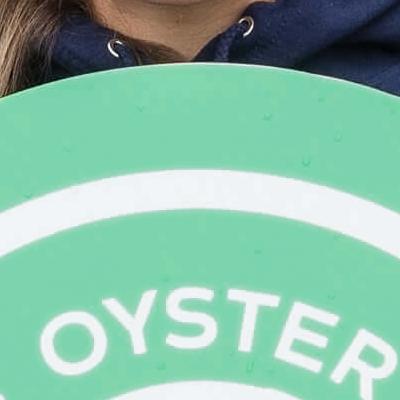We have pledged to 'go greener' in our 2023 and to help safeguard the wild, native oyster bed that our festival celebrates.
Over the next few weeks we'll update the Green & Circular page on our website with details of the actions we're taking to reduce the festival's environmental footprint.
One of the exciting new things we're doing this year is collecting back the shell of every oyster consumed at the festival. The shells will be cleaned and then weathered on the edge of Loch Ryan for almost a year. They'll then be returned to the floor of Loch Ryan to create habitat to help grow the native oyster bed.
Allana Hardie is leading on sustainability for us, and she explained:
“The beauty and ecological importance of Loch Ryan and its wild, native oyster bed is at the very heart of Stranraer Oyster Festival, and we have always been mindful of our responsibility to manage the festival sustainably. This year we want to go even further. We’ve reviewed every area of festival and site management to see where we can reduce our environmental footprint.
“Collecting back the oyster shells to return them to Loch Ryan has so many benefits. It reduces waste from the festival, it will create valuable shell habitat for young oysters which will help the oyster bed grow, and it will naturally sequester the carbon that’s embodied in the oyster shells.”
With almost all of the UK’s native oyster beds overfished to near-extinction in previous centuries, Scotland’s last wild, native oyster fishery is not just nationally important; it’s important at a species level.
The oyster shell circular collection scheme is just one of the green initiatives undertaken this year, which has been partly inspired by Dumfries and Galloway Council’s Greener Events Toolkit. Other eco-friendly festival measures include marine litter picks, improved waste management and using a ticketing provider that offsets carbon emissions through tree planting.
The festival is supported through Dumfries and Galloway Council’s Major Events Strategic Fund and EventScotland’s National Events Funding Programme. The work of Stranraer Development Trust is also supported by Kilgallioch Community Fund and South of Scotland Enterprise.
Councillor Ian Blake, Chair of the Council's Communities Committee said:
“The Oyster Festival is the perfect recipe for a great day out or weekend break in Dumfries and Galloway. The promotion of local produce and the wonderful unspoilt environment is a real tonic for visitors. It’s fantastic that the Festival is back and stronger than ever since the COVID-19 pandemic.”
Councillor Jackie McCamon, the Vice-Chair of the Communities Committee said:
“Stranraer’s regeneration is really taking shape and the Oyster Festival helps to showcase the beautiful setting the town has. This year’s Festival once again will celebrate Loch Ryan, our local food and drink industry and provide a huge economic boost for Stranraer and the wider Wigtownshire area.”
Paul Bush OBE, VisitScotland’s Director of Events, said:
“The Stranraer Oyster Festival is a fantastic celebration of Scotland’s natural larder and Dumfries and Galloway is the perfect stage for such a food and drink event. I’m delighted to see that the festival has again attracted such a high quality line up of guests with Michael, Tony, Julie and Felicity joining an already packed programme in the region.”

Allana Hardie of Stranraer Oyster Festival unveils the new Oyster Shell Collection Point signs, with Councillor Ian Blake and Councillor Jackie McCamon, both of Dumfries & Galloway Council
About The Oysters
Native oysters are considered ecosystem engineers because they help maintain marine ecosystems by filtering water and providing habitat for coastal wildlife.
The Loch Ryan oyster bed has been protected by Royal Charter since 1701. Sustainable management of the bed by Loch Ryan Oyster Fishery Company began in 1996 and oyster numbers are believed to have grown from 1 million to 60 million today. Loch Ryan oysters are now being used in native oyster bed restoration projects across the UK and in Germany.
Tristan Hugh-Jones of Loch Ryan Oyster Fishery said:
“We are continually trying to increase the size of the population, so we will fish in a particular area for a season. We’ll take only the largest oysters, about 5% of the total catch, and we tip the small oysters back into a well marked area of the loch. The smaller oysters are put close to each other to give the best possible chance of fertilising eggs and producing spats.
“What is extraordinary about Loch Ryan is the water has a circular movement, so the same water manages to stay in Loch Ryan for the ten days that the larvae need before settling onto natural shell on the floor of the loch. It’s incredibly unique.”







